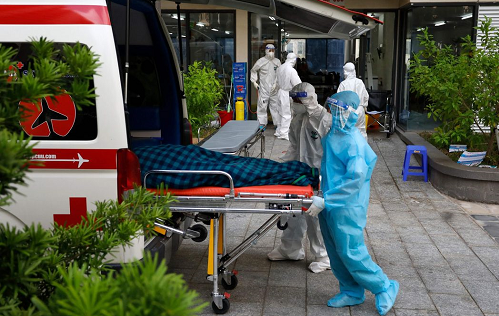August 27, 2021 – A recent Wall Street Journal article examined how the Delta variant has shut down factories in largely unvaccinated parts of Asia, throttling supply chains and contributing to rising consumer prices. According to the WSJ, a gap has formed between the demand for goods in the well vaccinated U.S. and the capacity of sparsely vaccinated manufacturing countries to meet it, building inflationary pressure.
For instance, Vietnam, which has given two vaccine doses to less than 3% of its population, has seen a surge in cases over the past six weeks driven by the Delta variant.
The country has strict Covid-19 containment policies—including locking down villages and quarantining tens of thousands of people in military barracks and other state-run centers—worked for the first 14 months of the pandemic, as it pumped out exercise equipment, electronics and pajamas for Western consumers.
“But the Delta variant has slipped through Vietnam’s defenses—just as it has recently for other largely unvaccinated exporters including Indonesia, Sri Lanka and Thailand,” the WSJ reported.
What could this mean for the U.S. healthcare supply chain?
In an interview for a story in the October 2021 issue of Repertoire magazine, Soumi Saha, vice president, advocacy, Premier, said part of the challenge of trying to bring more manufacturing to the U.S. is that many of the raw materials used in medical products originate outside the U.S. “Prescription opioids, for example, are made from poppies, which are grown primarily in Afghanistan and Australia. Many computer chips are made in Asia. The same is true for many of the raw materials found in PPE.”
Saha said this is where Premier’s concept of developing near-shore partners comes into play. “Our ‘All of the Americas’ approach means we look to North, Central and South America for sources of supplies and products. Premier’s CEO Mike Alkire talks about what is needed to build a healthy supply chain – a combination of domestic, offshore and near-shore capabilities. What can we move on roads and railways, so we don’t need to rely on ocean vessels?”
Look for more insights from Saha and other healthcare supply chain experts in the October 2021 issue of Repertoire.
